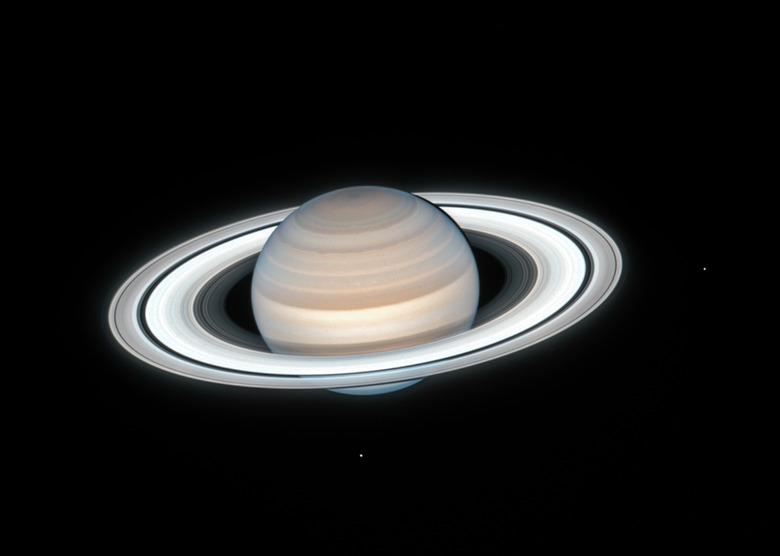Hubble Is Still Snapping Gorgeous Images Despite Its Advanced Age
- The Hubble Space Telescope recently snapped one of the most incredible photos of Saturn ever.
- The image was captured on July 4th and shows Saturn, its iconic rings, and two of Saturn's many moons.
- Hubble is old by NASA standards, but it continues to produce incredible results regardless of its age.
The Hubble Space Telescope isn't getting any younger, but its advancing age hasn't stopped it from capturing some of its greatest images ever during its twilight years. The latest comes courtesy of NASA and the European Space Agency, who directed the telescope to snap a high-resolution image of the ringed planet Saturn.
The image, which NASA calls "Summertime on Saturn," shows the gassy planet in stunning detail. We can see the bold, distinct rings as well as the planet's incredible pattern of banding. The photo was captured on July 4th, NASA says, and it was snapped when the planet was at a distance of 839 million miles from Earth.
NASA explains:
Hubble's sharp view resolves the finely etched concentric ring structure. The rings are mostly made of pieces of ice, with sizes ranging from tiny grains to giant boulders. Just how and when the rings formed remains one of our solar system's biggest mysteries. Conventional wisdom is that they are as old as the planet, over 4 billion years. But because the rings are so bright – like freshly fallen snow – a competing theory is that they may have formed during the age of the dinosaurs.
It's incredibly difficult for astronomers to age the rings or determine exactly how they formed. Still, many scientists are confident that the rings formed fairly recently, perhaps even within 300 million years of today.
"NASA's Cassini spacecraft measurements of tiny grains raining into Saturn's atmosphere suggest the rings can only last for 300 million more years, which is one of the arguments for a young age of the ring system," Hubble team member Michael Wong said in a statement.
It's a great snapshot of Saturn, but it holds a couple of very special added bonuses as well. You can actually see a pair of Saturn's many moons thanks to their bright reflection of sunlight. On the right of the image, the bright dot you see is the moon Mimas, and toward the bottom of the frame is the icy ocean moon Enceladus.
Enceladus is of particular interest to scientists as the frosty Moon has demonstrated that it has an ocean of liquid water hiding beneath its icy shell. Jets of liquid water shoot out from between massive cracks in the ice, and it's possible that the mass subsurface ocean supports life in some form. Interest in a mission to investigate the ocean is growing, so we might learn more about that special moon soon.
